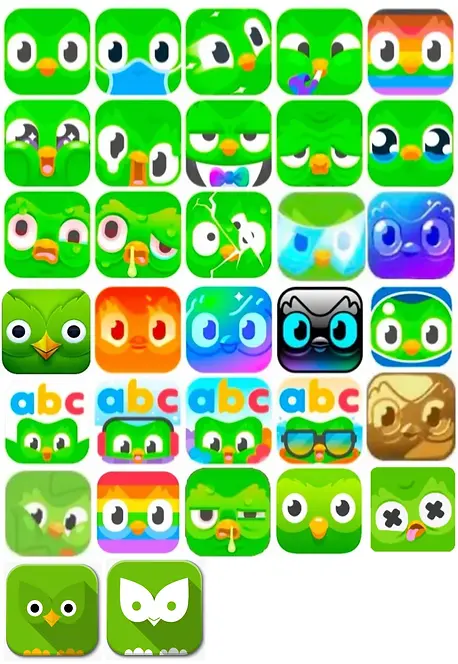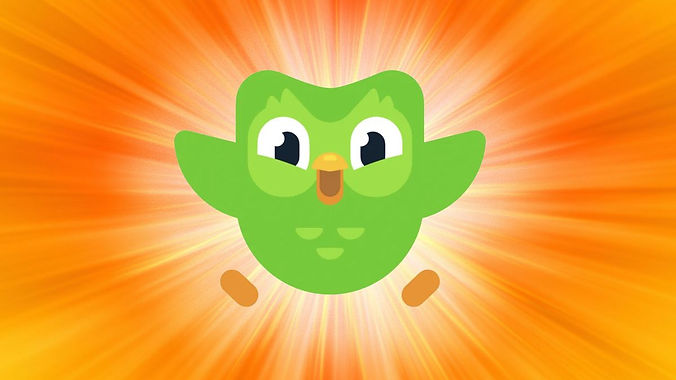
Case Study: Enhancing Duolingo's Conversational Practice Feature
Overview
Product Name: Duolingo
Company: Duolingo Inc.
Industry: Language-learning
Release Date: 2011
Platform(s): Web, iOS, Android
Target Audience: Language learners of all levels, casual learners, students, professionals, and travelers
Pricing Model: Freemium (free with ads, premium subscription available)
Competitors: Babbel, Rosetta Stone, Busuu, Memrise, Mondly, Lingvist
Duolingo:
the Product

Duolingo is the world-leading, AI-driven language education platform that has revolutionized online learning by combining gamification, personalization, and accessibility.
With over 750 million global users, Duolingo has become synonymous with enjoyable and effective language learning.
The platform’s freemium business model, innovative features, and commitment to making education universally accessible have driven remarkable growth and retention.
Despite facing fierce competition, Duolingo continues to innovate, particularly with premium AI-driven conversational features, positioning it uniquely for sustained market leadership.
Mission Statement
“To develop the best education in the world and make it universally available.”
Core Values & Differentiators
• Accessible, gamified language education
• AI-driven personalized learning
• Free education, monetized via premium subscriptions and advertising
What problem does this product solve?
Duolingo provides an accessible and engaging way to learn languages through gamified lessons, making education available to a global audience, including those who may not have access to traditional learning resources.
Who are the users facing this problem?
Students, travelers, professionals, language enthusiasts, and individuals in regions where access to language courses is limited.
What alternatives exist, and how do they compare?
Babbel: Structured, grammar-focused but lacks free-tier access.
Rosetta Stone: Legacy software, immersive but expensive.
Busuu: Offers social learning with human feedback but has a smaller user base.
Market Position & Performance
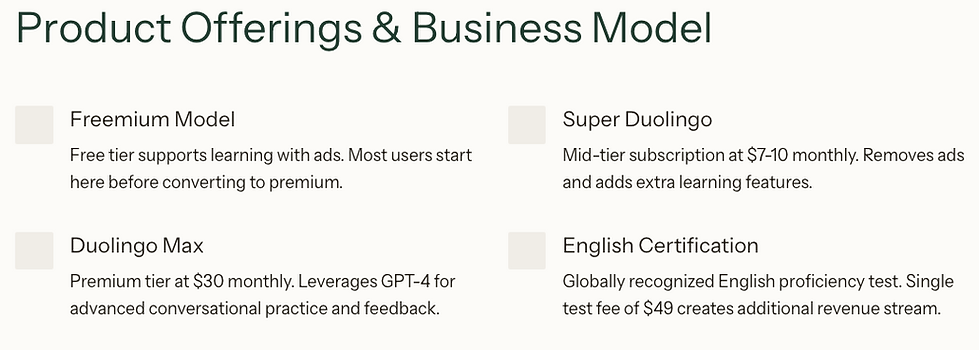
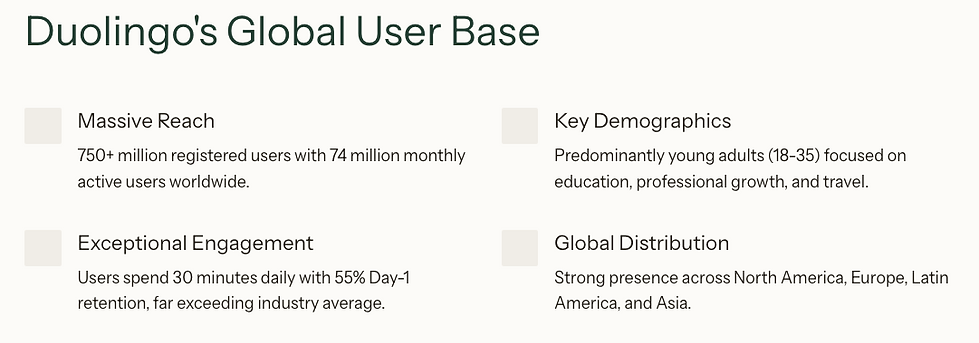

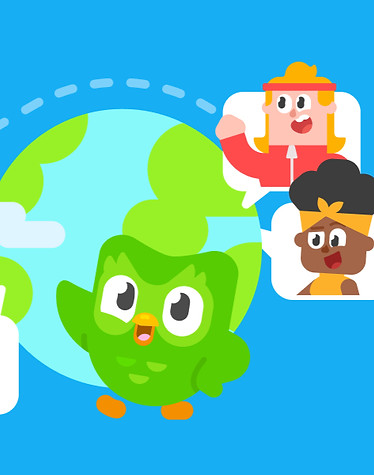
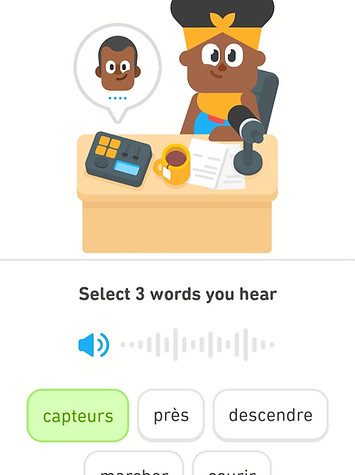
Key Features & Functionality

User Experience (UX) Analysis
Onboarding Process
-
Simple and intuitive.
-
Users select a language and proficiency level.
-
Immediate access to first lesson without sign-up requirement.
Navigation & UI Design
-
Bright, engaging visuals with easy-to-follow lesson paths.
-
Intuitive navigation with progress tracking.
-
Mobile-first approach ensures accessibility.
Strengths & Weaknesses
-
Strengths: Engaging gamification, high accessibility, broad language selection.
-
Weaknesses: Limited conversational depth, rigid answer acceptance.
Competitive Landscape
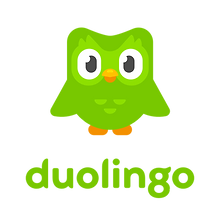
VS
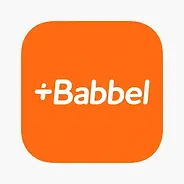




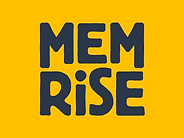
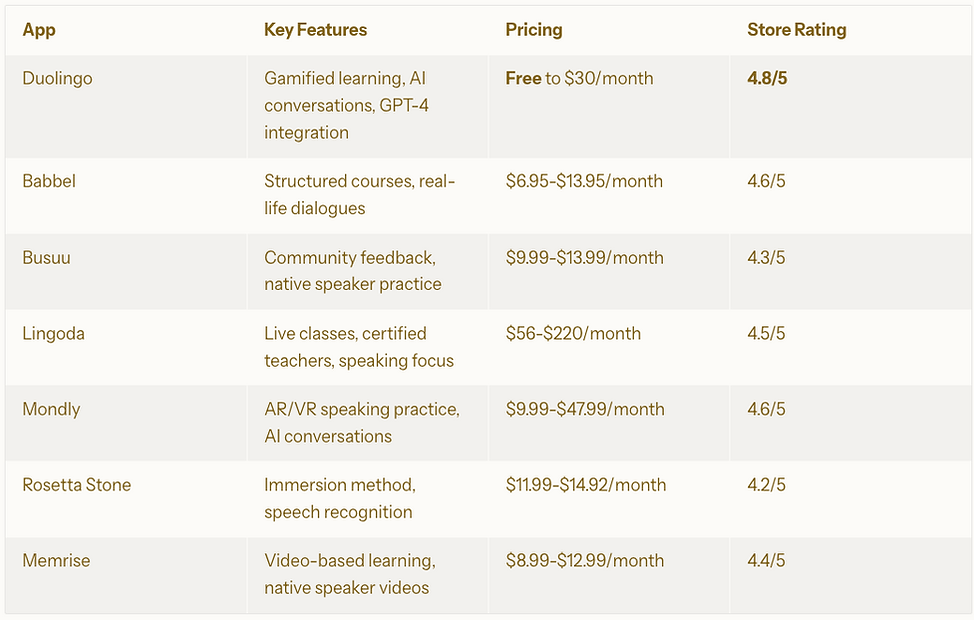
Recent Innovations & Strategic Moves
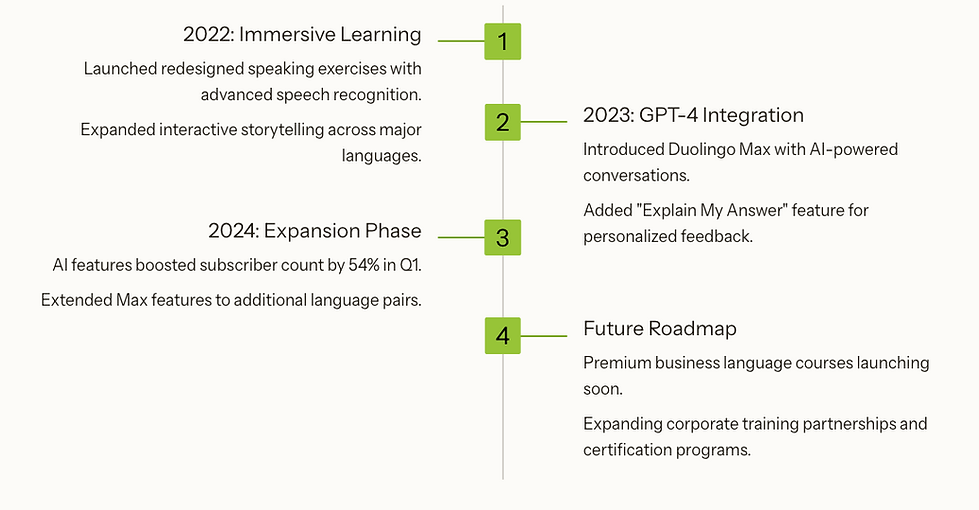


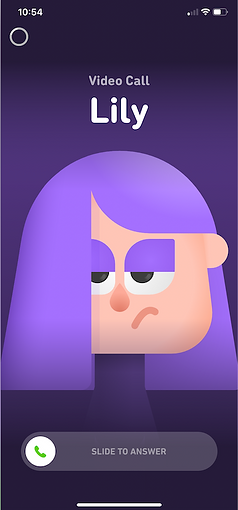
Future Opportunities & Challenges
User Experience Pain Points
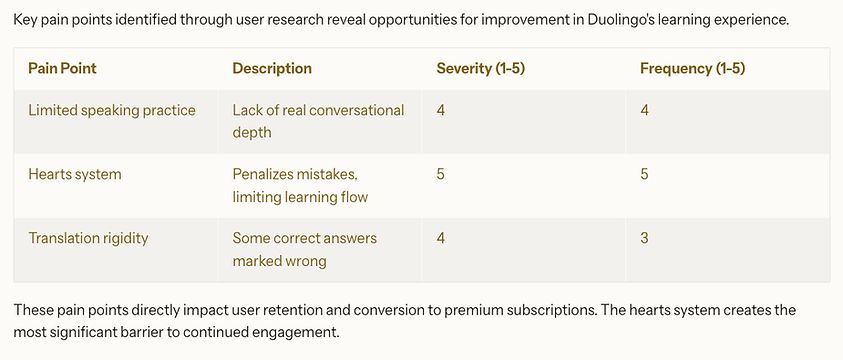
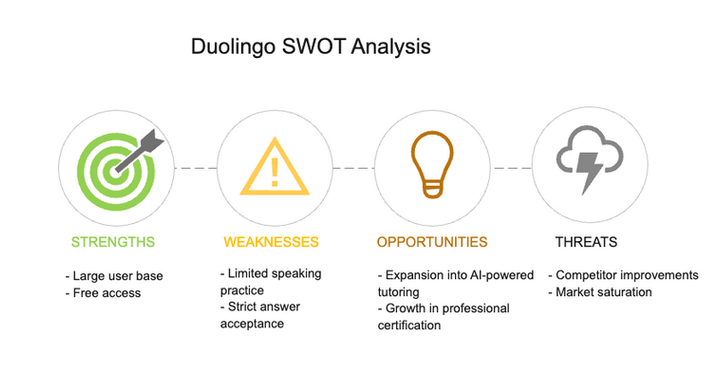
The Problem...
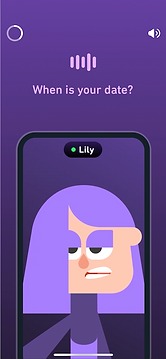
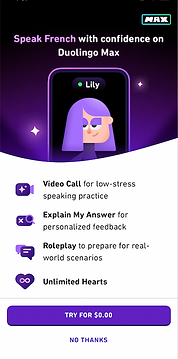
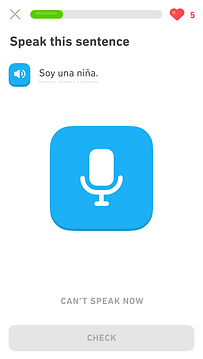
User Feedback & Reviews
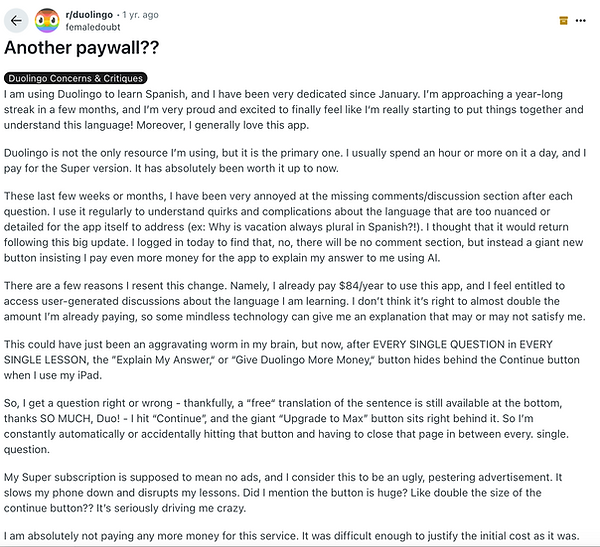
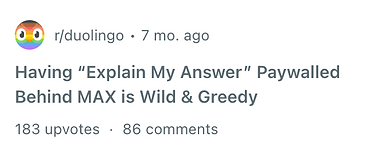






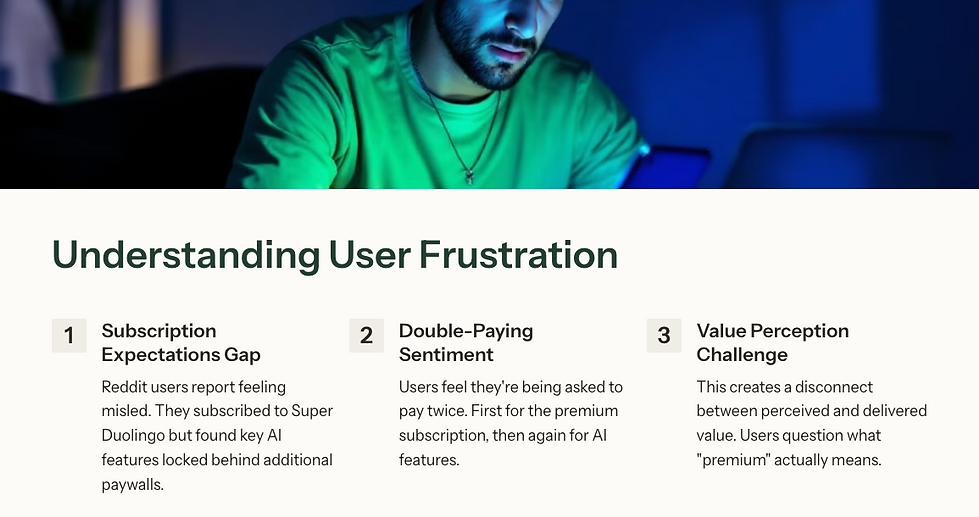
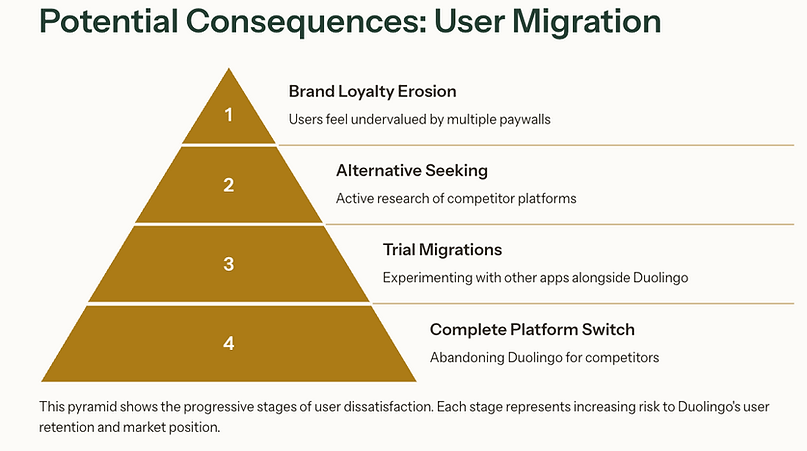
Existing Market Solutions
Comparison of App Speaking Features & User Adoption
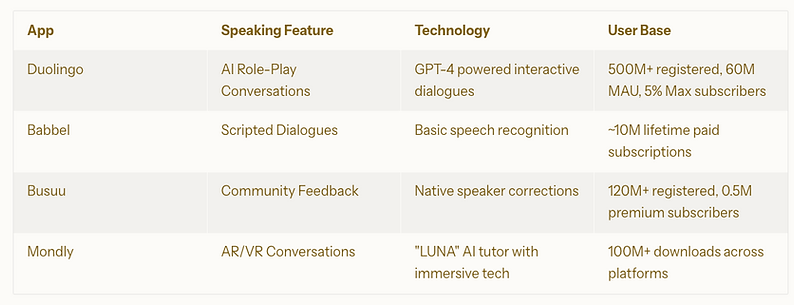
Duolingo leads in both conversation quality and user engagement. Their GPT-4 powered Role-Play drives unprecedented speaking confidence and retention.
While Mondly pioneered immersive speaking tech, it attracts significantly fewer active users. Babbel and Busuu struggle with limited speaking features and lower conversion rates.
Duolingo vs. Lingoda: Speaking Skills Comparison
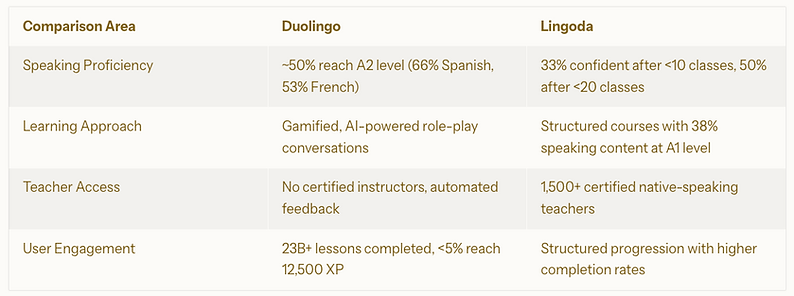
While Duolingo excels in gamification and AI-powered conversations, Lingoda offers more structured speaking practice with certified teachers. This creates different paths to fluency based on learning preferences.
AI and Future of Conversational Practice
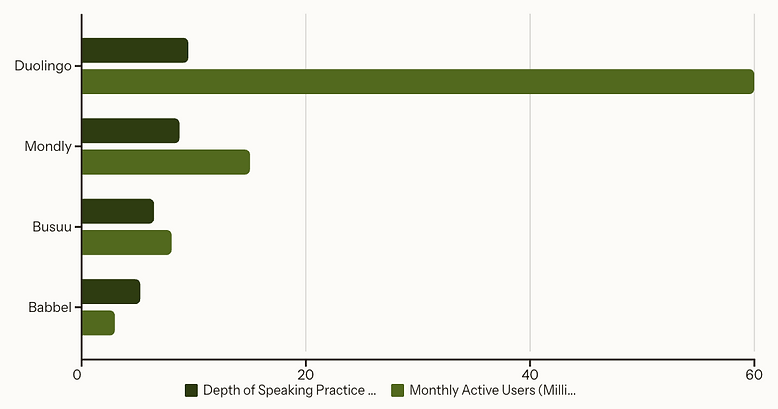
Duolingo dominates both conversation depth and user engagement with GPT-4 powered Role-Play.
While Mondly pioneered AR/VR conversations with "LUNA," its user base remains fraction of Duolingo's.
Busuu's community feedback model attracts 120M+ registrations but converts few to active users.
Babbel focuses on paid subscribers with basic pronunciation tools rather than open-ended AI conversations.
Solutions
Limited Daily Free AI Roleplay
Offer 10-min/day limited role-play conversation feature on free tier.
Earned Speaking Tokens
Users earn tokens through lessons allowing limited free AI role-play usage
Community Conversation
Integrate community-based speaking rooms for free users
Ad-Supported AI Conversations
Provide short conversational interactions supported by ads.
Weighing Pros & Cons (Decision Matrix)
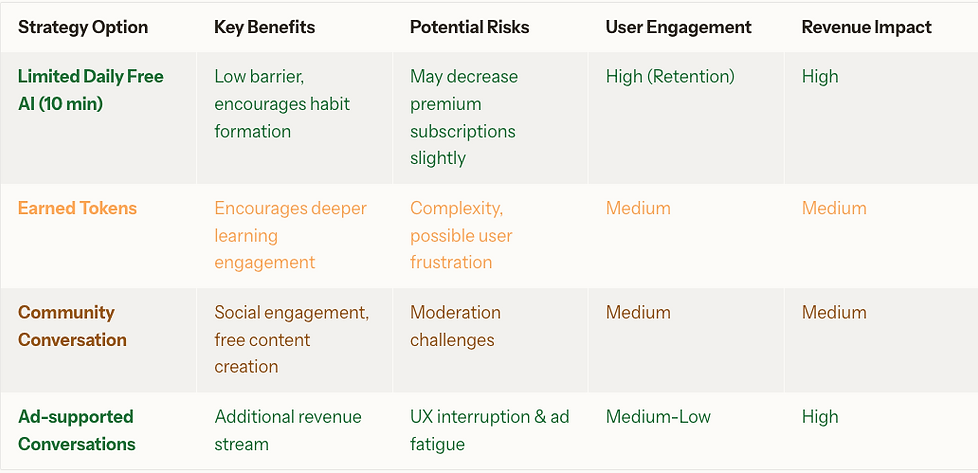
Selected Solution:
Limited Daily Free AI Roleplay (5 min/day)
Highest impact on retention, easiest integration, potential upsell opportunity.
Prototype
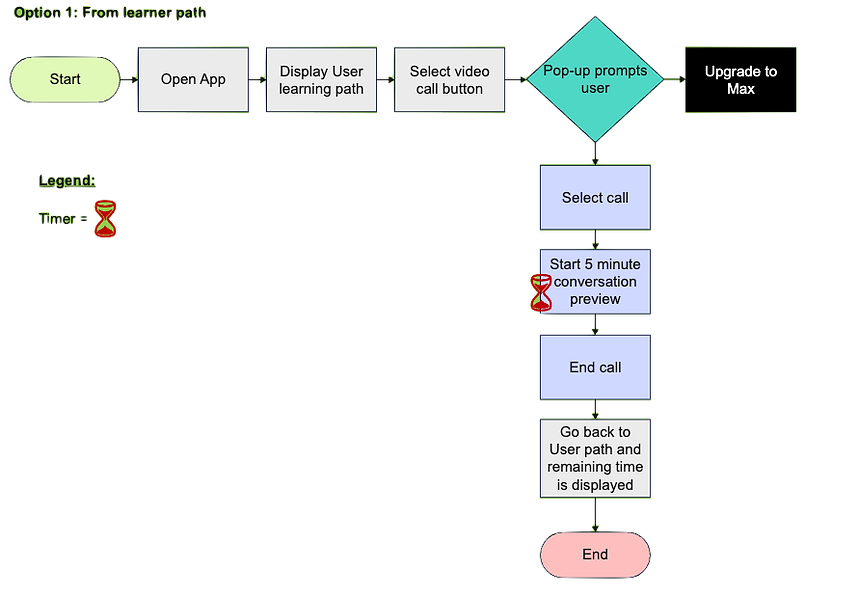
User Flows

2
Option 1.
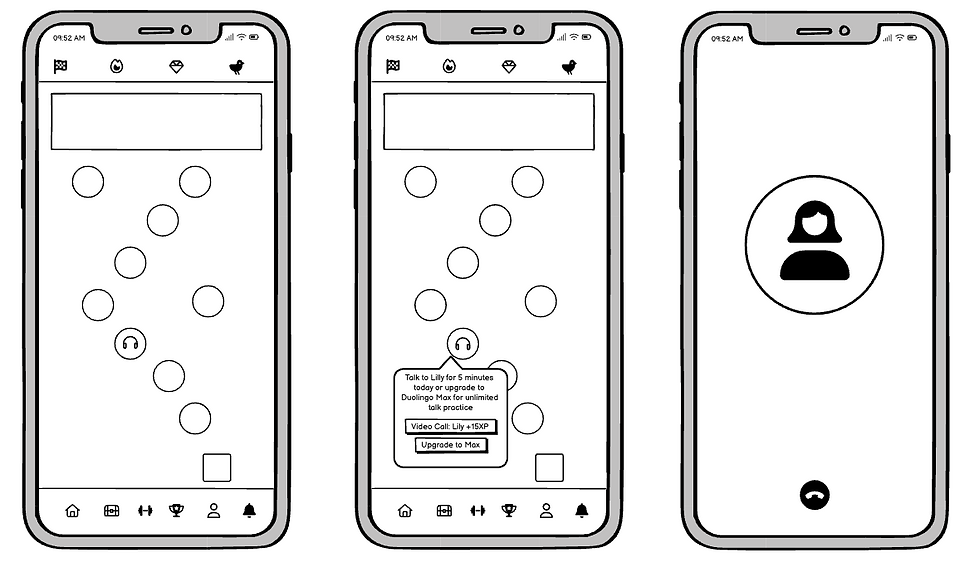
A
B
C
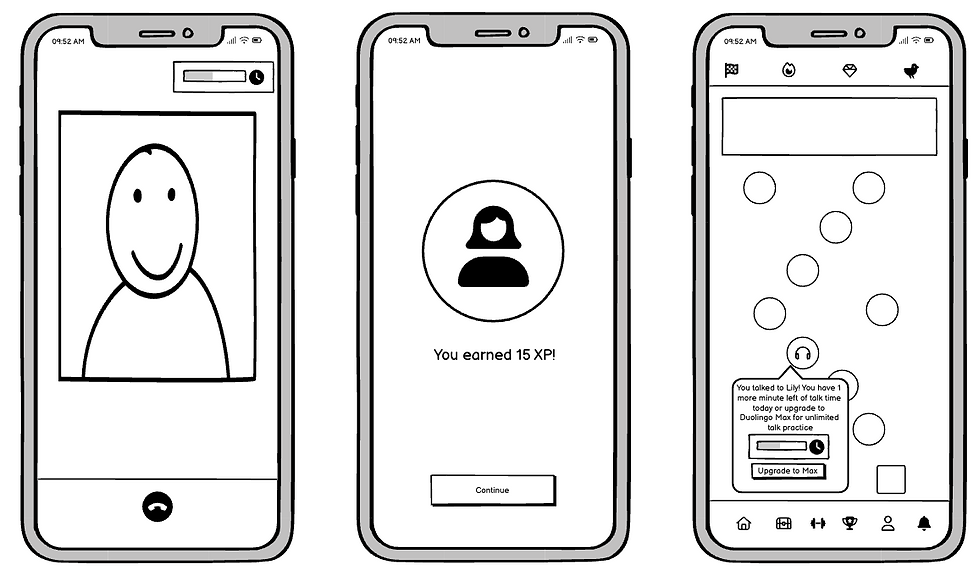
D
E
F
Option 2.
Daily 5-minute timer and progress bar for duration of the video call
Video call progress bar will remain for the rest of the day
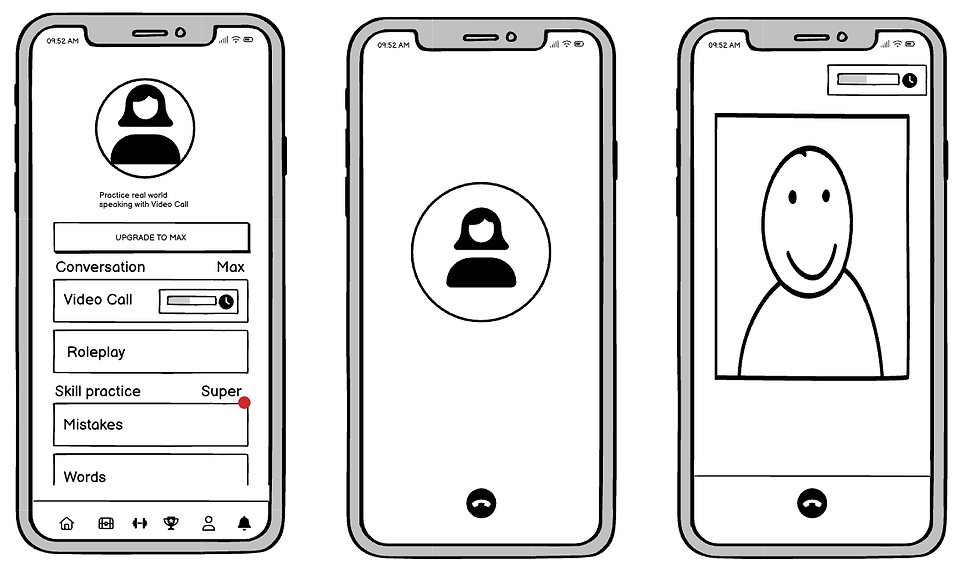
A
B
C
Video call progress bar showing how much time available
Learning path
Limited 5-minute video call for15XP
or upgrade to Max for unlimited
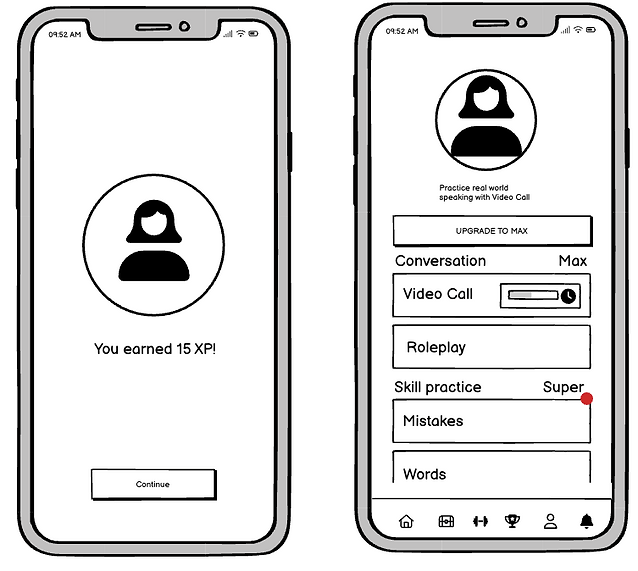
D
E
Video call progress bar will remain for the rest of the day
Roadmap & Success Metrics
Phase 1: Beta Testing
• Selected group of users for initial rollout (free users with high DAU).
• Collect qualitative feedback, refine based on engagement.
Phase 2: Wider Release
• Full rollout to all users after addressing initial feedback.
• Announce via email and in-app notifications.
Phase 3: Post-launch Analysis
• Monitor and analyze initial success metrics.
Success Metrics (KPIs)
Retention Rates
Monitor daily/weekly retention of free users pre- and post-launch (goal: +10-15%)
Conversion Rates to Paid Plans
Track impact on paid subscriptions (goal: minimal negative impact, ideally a net gain)
Daily Active Users (DAU)
Expect increase in DAU among free-tier users by at least 5-10%
User Satisfaction & Reviews
Improved user ratings & reviews around conversational practice (+20% positive sentiment).
Conclusion & Takeaway
Introducing a limited daily free AI-powered conversational feature addresses user frustrations effectively, bridging the gap between free and premium offerings. This feature is anticipated to significantly enhance user engagement, satisfaction, and retention, further solidifying Duolingo's competitive edge.
-
Overall Impression
Duolingo has revolutionized language learning by making it accessible and engaging for millions worldwide. Its market dominance stems from effective gamification, AI personalization, and a freemium model that scales.
-
What can be learned from this product?
-
Gamification and habit-forming mechanics drive engagement.
-
Personalization is key to keeping learners motivated.
-
A freemium model can be highly profitable when scaled effectively.
-
Final Thoughts
While Duolingo excels in accessibility and engagement, its main challenge lies in improving content depth for advanced learners. Strategic AI enhancements and conversational learning improvements will be critical to maintaining its leadership in the space. This as well as adding a Duolingo for kids product.
